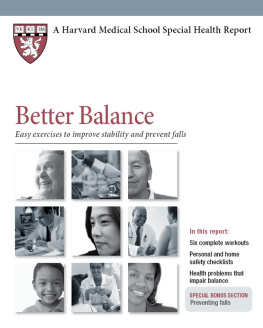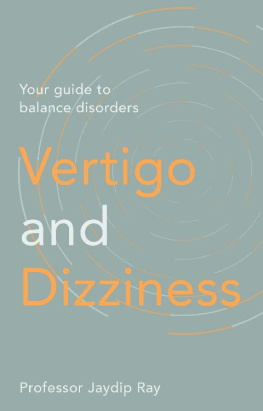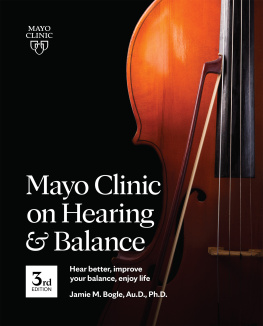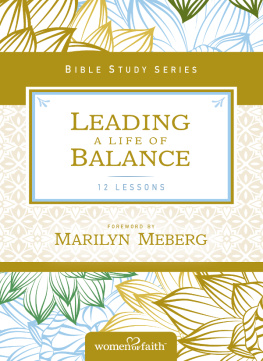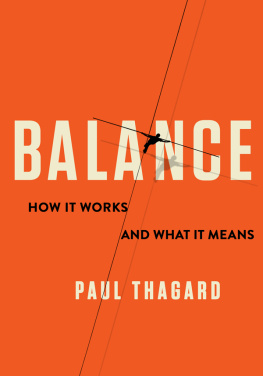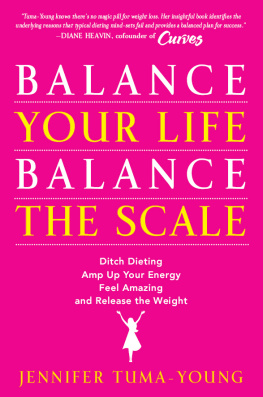BETTER BALANCE
SPECIAL HEALTH REPORT
Medical Editors
Suzanne Salamon M.D.
Associate Chief for Clinical Programs,
Beth Israel Deaconess Medical Center,
Division of Gerontology
Instructor, Division of Gerontology,
Harvard Medical School
Brad Manor. Ph.D.
Director, Aging and Balance Control Laboratory,
Beth Israel Deaconess Medical Center,
Division of Gerontology
Instructor in Medicine,
Harvard Medical School
Personal Trainers
Josie Gardiner
Master Trainer and Fitness Consultant
Joy Prouty
Master Trainer and Fitness Consultant
Writer
Francesca Coltrera
Photographer
Michael Carroll
Editor
Annmarie F. Dadoly
Editor, Special Health Reports
Kathleen Cahill Allison
Published by Harvard Medical School
Anthony L Komaroff, M.D., Editor in Chief Edward Coburn, Publishing Director
Copyright 2012 by Harvard University. Written permission is required to reproduce, in any manner, in whole or in part, the material contained herein. Submit reprint requests in writing to:
Harvard Health Publications
10 Shattuck St., 2nd Floor, Boston, MA 02115
617-432-1485 Fax: 617-432-4719
Website
For the latest information and most up-to-date publication list, visit us online at www.health.harvard.edu .
Customer Service
For all subscription questions or problems (rates, subscribing, address changes, billing problems) call 877-649-9457, send an email to HarvardProd@StrategicFulfillment.com , or write to Harvard Health Publications, P.O. Box 9308, Big Sandy, TX 75755-9308.
Ordering Special Health Reports
Harvard Medical School publishes Special Health Reports on a wide range of topics. To order copies of this or other reports, please see the instructions at the back of this report, or go to our website: www.health.harvard.edu .
For bulk rates, corporate sales, and licensing:
Belvoir Media Group
Attn: Harvard Health Publications
P.O. Box 5656
Norwalk, CT 06856-5656
email: licensing@belvoir.com
ISBN: 978-1-61401-013-5
The goal of materials provided by Harvard Health Publications is to interpret medical information for the general reader. This report is not intended as a substitute for personal medical advice, which should be obtained directly from a physician.

Copyright Notice
This report is copyrighted by Harvard University and is protected by U.S. and international copyright. All rights reserved.
Heres what you CAN do
Print out one copy and route this original to family.
You are permitted to have one copy of this publication on your computer at any time (you cant put it on a network unless you purchased a license to do so). If you have paid for more copies, then you may have that many copies on computers at any time.
Copy, on an occasional basis, a couple of pages to give to friends, family members, or colleagues.
We are registered with the Copyright Clearance Center (CCC). You can comply with the copyright laws by paying a royalty on copies you make of passages. But not even the CCC can authorize cover-to-cover photocopying or wholesale electronic forwarding.
If you want to distribute copies of this publication, either in print or electronic form, to others on a regular basis, ask us about bulk discounts or licensing opportunities. You may be able to negotiate an agreement, for a single fee, that would enable you to legally distribute photocopies or electronic copies to others.
Heres what you CANT do (without prior permission)
Make or forward email copies of an entire publication. The law provides for a very limited amount of copying, commonly referred to as fair use. However, cover-to-cover photocopying is forbidden.
Electronic transmission of a copyrighted work is the legal equivalent of photocopying it (and so is posting it on the Internet or in an electronic database), and is therefore not allowed.
Routinely copy and distribute portions.
Republish or repackage the contents.
Some publishers must resort to lawsuits to protect their publications. Harvard Health Publications would like to eliminate the need for such suits by helping to educate customers. We hope this outline has helped explain what is legal and what is not.
For more information
Copyright Clearance Center (CCC)
Ph: 508-750-8400
www.copyright.com
Permissions Requests
Natalie Ramm, Harvard Health Publications
Ph: 617.432.2876
natalie_ramm@hms.harvard.edu
Licensing, Bulk, and Corporate Sales
Tonya Phillips, Belvoir Media Group
Ph: 203-857-3148
tphillips@belvoir.com
Harvard Health Publications
Harvard Medical School
10 Shattuck Street, 2nd Floor
Boston, MA 02115-6011
www.health.harvard.edu
Contents

Dear Reader,
When a toddler tumbles, he or she may shed a few tears before surging ahead again unscathed. When an adult falls, particularly an older adult, consequences are often far worse. Every year, falls prove fatal for thousands of people. In 2009, more than 22,300 people ages 55 or older died this way. Hip fractures and head injuries from falls undermine independence and raise risk for an early death. Cuts, bruises, and hard knocks to confidence result, too.
Poor balance, a persistent problem for millions of Americans, triggers many falls. In young, healthy adults, balance is largely an automatic reflex. However, gradual changes linked to growing oldersuch as weak or inflexible muscles, slower reflexes, and worsening eyesightaffect the sense of balance. Certain health problemssuch as inner ear disorders, neuropathy, and heart rhythm disturbancesmay upset balance, too. So can alcohol and many medications. Perhaps its not surprising that every year, at least one out of three people over age 65 falls.
Shaky balance can spur a downward spiral. Often, people begin moving around less during the day, voluntarily cutting back activities. Confidence dips, muscles essential to balance grow weaker still, and unsteadiness rises in response. So does fear of falling.
For this report, weve combined our expertise to select safe, effective balance exercises that can help stop this cycle. With practice, almost anyone can achieve better balance. Strong legs and flexible ankles help prevent falls and allow you to catch yourself if you do trip. Whats more, the full blend of recommended activities can help you build better awareness of your body and surroundings, boost your confidence, and tune up your heart and lungs to keep you healthy and independent.
Falls occur for many reasons, of course. Clutter, broken pavement, dim lighting, and even essential medications can play a role. Thats why weve written an in-depth section on fall prevention. Our checklists offer step-by-step strategies for fall-proofing yourself and your home.
So, flip through the pages of this Special Health Report. Read the safety and fall-prevention tips. Talk to your doctor about health problems and medications that could play a role in falls. Then get started on the walking plan and balance workouts. Fewer injuries and a restored zest in life are well worth the effort.
Next page
